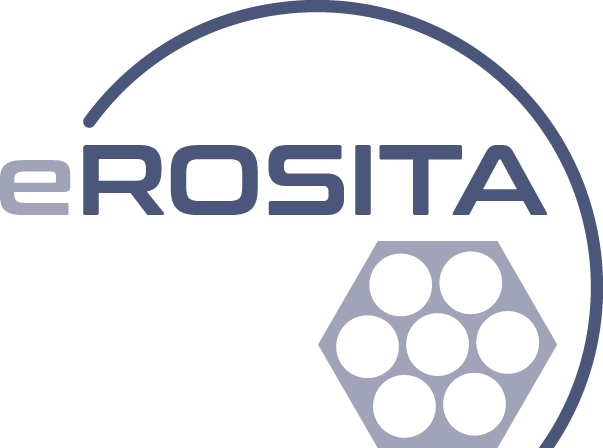
 Welcome to the eROSITA-DE Data Release 1 (DR1) site!
Welcome to the eROSITA-DE Data Release 1 (DR1) site!
The German eROSITA Consortium (eROSITA-DE) makes public the first six months of the SRG/eROSITA all-sky survey (eRASS1) data whose proprietary rights lie with the German eROSITA consortium. This public data release is called eROSITA-DE Data Release 1 (DR1).
The scientific exploitation of the eROSITA All-Sky Survey (eRASS) data is shared equally between a German and a Russian consortium. Two hemispheres of the sky have been defined, over which each team has unique scientific data exploitation rights. This simple scheme guarantees a fair share of both Galactic and extragalactic areas.
Data rights are split by Galactic longitude (l) and latitude (b), with a division marked by the great circle passing through the Galactic poles (l,b)=(0,+90);(0,-90) and the Galactic Center SgrA* (l,b)=(359.94423568,-0.04616002): data with -0.05576432< l <179.94423568 degrees (Eastern Galactic hemisphere) belong to the Russian consortium, while data with 359.94423568 > l >179.94423568 degrees (Western Galactic hemisphere) belong to eROSITA-DE. The Western Galactic hemisphere observations were released to the public through this site on 31. January 2024.

RGB eROSITA-DE X-ray image of eRASS1 with a Zenith Equal Area projection. Red, green, and blue colours represent X-ray intensities in the 0.3—0.6, 0.6—1.0, and 1.0—2.3 keV energy bands, respectively. An animation of the progress of the eRASS1 survey through its observing period can be found here, showing the number of counts in the 0.3-2.3 keV band with orthographic projection.
| News |
 2024-04-29 2024-04-29 Missing source products were added to the archive (click here for more information). 2024-04-24 The Galactic coordinates (LII and BII) in the DR1 Main, Hard, and Supplementary catalogs are off by few arcseconds. Click here for more information. 2024-02-23 The released spectra in source products were modified to fix some header keywords. Some missing source products were also added to the archive (click here for more information). 2024-01-31 The first eROSITA-DE data release takes place! |
DR1 consists of 20626.5 square degrees, which have a variety of effective exposure values, ranging from ∼100 seconds in the Ecliptic equator to more than 10,000 seconds close to the Ecliptic pole in the 0.6—2.3 keV energy band. eROSITA-DE releases calibrated event lists in the 0.2—10 keV energy band, images, exposure maps, background maps, and sensitivity maps as well as flux upper limits in different energy bands. These data products are organised in separate sky fields of 3.6x3.6 degrees. Furthermore, source spectra and light curves for selected (bright) targets are released. The tool eROSITA-DE Data (eRODat) offers an interactive way of visualizing the DR1 data. A basket (aka shopping cart) can be used to handle and download data of interest. (Half) All-sky survey HiPS maps can be displayed to look at the DR1 data, Half sky maps. All DR1 catalogs are available here.
As part of DR1, an updated version of the X-ray software to analyse eROSITA data is also offered. The eROSITA Science Analysis Software System for DR1 (eSASS4DR1) is a compilation of tasks and scripts that allow scientists to manipulate event lists and obtain science data products. The eSASS team has documented how to download and install this software, as well as created an updated version of the Cookbook with examples and guidelines on how to use the different eSASS tasks. eSASS also comes with a Calibration Database (CALDB), which is used by the distinct eSASS tasks. The eSASS team also has extensively documented the different data and source products in DR1.
Please acknowledge our work if you use eROSITA-DE DR1 data and/or the eSASS software in your publication.
This site also provides technical information about eROSITA. Documentation about known issues is also available. Scientists are strongly encouraged to read these pages since it will help them to understand better the eROSITA-DE observations during eRASS1, and the different data products that are offered.
If you have questions, please visit the Frequently Asked Questions (FAQ) section or the eSASS Cookbook. Perhaps your doubt is already answered there.
Visit our Help Forum, where any member of the eROSITA-DE community or a future external user can answer your question.
Check out this link for a list of scientific publications from the eROSITA-DE team.